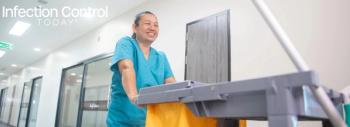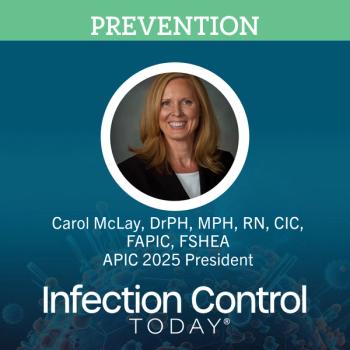
FDA Clears Single-Use Antibacterial Surgical Respirator
The U.S. Food and Drug Administration cleared the SpectraShield 9500 N95 surgical respirator, a device that kills 99.99 percent of three different kinds of bacteria when exposed to its outer surface.
The FDA has cleared the SpectraShield as a single-use, N95 surgical respirator for use in healthcare settings by healthcare personnel to protect against microorganisms, body fluids and particulate material.
Data from laboratory tests demonstrated that the respirator is effective against the following bacteria: Streptococcus pyogenes, methicillin-resistant Staphylococcus aureus (MRSA) and Haemophilus influenzae.
"The SpectraShield 9500 N95 anti-bacterial surgical respirator may reduce the risk of exposure to specific bacterial agents during medical emergencies," says Elizabeth Claverie-Williams, branch chief of Infection Control Devices at the FDA's Center for Devices and Radiological Health.
N95 surgical respirators are different than regular facemasks, which are designed to help block large-particle droplets, splashes, sprays, or splatter that may contain viruses and bacteria from reaching the mouth and nose.
While a regular facemask may be effective in blocking splashes and large-particle droplets, it does not filter or block tiny particles that may be transmitted by coughs, sneezes, or certain medical procedures. Regular facemasks also do not provide complete protection from germs and other contaminants because of the loose fit between the surface and the face.
The N95 designation means that the respirator blocks at least 95 percent of very small particles when subjected to careful testing. If properly fitted, the capabilities of N95 respirators exceed those of regular facemasks. Even a properly fitted N95 respirator, however, does not eliminate the risk of infection, illness, or death.
N95 surgical respirators cleared by the FDA for use in healthcare settings, including the SpectraShield 9500 N95 surgical respirator, have also been evaluated by the National Institute for Occupational Safety and Health, part of the Centers for Disease Control and Prevention.
Newsletter
Stay prepared and protected with Infection Control Today's newsletter, delivering essential updates, best practices, and expert insights for infection preventionists.





